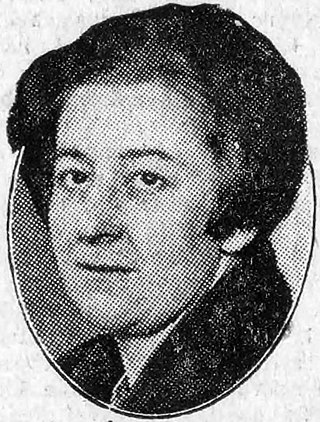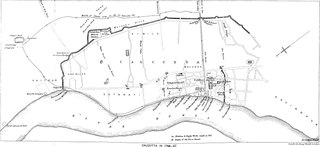Related Research Articles
Kim Dovey is an Australian architectural and urban critic and Professor of Architecture and Urban Design at the University of Melbourne, Australia, teaching and researching urban design. Born in Western Australia he received degrees from Curtin University and the University of Melbourne, and a Ph.D. from the University of California, Berkeley, USA. He has lectured and broadcast widely on social issues in architecture and urban design. His book Framing Places explores theories of place as mediators of power, incorporating case studies of politics of public space, housing, shopping malls and corporate towers. Becoming Places (2010) explores the formation of place identity and develops a theory of place as dynamic assemblage. Urban Design Thinking (2016) is a broad-ranging application of assemblage thinking in urban design. Mapping Urbanities (2017) demonstrates applied research using urban mapping in the production of spatial knowledge. He has made significant contributions to theories of place, transit-oriented development, urban density, walkability, informal settlement and creative clusters. He is author of the Urban DMA theory of walkability. He is Co-Director of InfUr- the Informal Urbanism Research Hub at the University of Melbourne where he leads research on informal settlement and street vending.

The Bartlett Faculty of the Built Environment, also known as The Bartlett, is the academic centre for the study of the built environment at University College London (UCL), United Kingdom. It is home to thirteen departments that have expertise in individual subfields, including the Bartlett School of Architecture, Bartlett School of Planning, Bartlett Development Planning Unit, and the Centre for Advanced Spatial Analysis. The Bartlett is consistently ranked the highest in Europe and the UK and among the highest in the world for the "Architecture and the Built Environment" category in major rankings. It is currently ranked the first in the world for the year 2023.
Iain Borden is an English architectural historian and urban commentator.

Bruno Zevi was an Italian architect, historian, professor, curator, author, and editor. Zevi was a vocal critic of "classicizing" modern architecture and postmodernism.

Elisabeth Whitworth Scott was a British architect who designed the Shakespeare Memorial Theatre at Stratford-upon-Avon, England. This was the first important public building in Britain to be designed by a female architect.
Interest in the Architecture of Las Vegas began in the late 1960s, when in 1967 architects Robert Venturi and Denise Scott Brown traveled to the city accompanied by students in order to study its architecture. They wrote, with Steven Izenour, a report in 1972 on the subject entitled Learning From Las Vegas: the Forgotten Symbolism of Architectural Form. This report, and its thesis that Las Vegas showed the way for architecture in the late 20th century, drew the attention of the architectural world to the city. A quarter of a century later, for a BBC program Venturi and Scott Brown revisited the city, and revised their opinions.

Griselda Frances Sinclair Pollock is an art historian and cultural analyst of international, postcolonial feminist studies in visual arts and visual culture. Since 1977, Pollock has been an influential scholar of modern art, avant-garde art, postmodern art, and contemporary art. She is a major influence in feminist theory, feminist art history, and gender studies. She is renowned for her innovative feminist approaches to art history which aim to deconstruct the lack of appreciation and importance of women in art as other than objects for the male gaze.
muf is a collaborative of artists, architects and urban designers based in London, England, specialising in the design of the urban public realm to facilitate appropriation by users.

Susana Torre is an Argentine-born American architect, critic and educator, based in New York City (1968–2008) and in Carboneras, Almeria, Spain. Torre has developed a career that combined “theoretical concerns with the actual practice of building” and architectural and urban design with teaching and writing. Torre was the first woman invited to design a building in Columbus, IN, “a town internationally known for its collection of buildings designed by prominent architects.”
Spatial intelligence is an area in the theory of multiple intelligences that deals with spatial judgment and the ability to visualize with the mind's eye. It is defined by Howard Gardner as a human computational capacity that provides the ability or mental skill to solve spatial problems of navigation, visualization of objects from different angles and space, faces or scenes recognition, or to notice fine details. Gardner further explains that Spatial Intelligence could be more effective to solve problems in areas related to realistic, thing-oriented, and investigative occupations. This capability is a brain skill that is also found in people with visual impairment. As researched by Gardner, a blind person can recognize shapes in a non-visual way. The spatial reasoning of the blind person allows them to translate tactile sensations into mental calculations of length and visualizations of form.
Felipe Hernández is a Colombian-born architect who lives and works in the United Kingdom. He is Associate Professor of Architecture and Urban Studies in the Department of Architecture, and Fellow Architect and Director of Studies at King's College, Cambridge.
Naomi Stead is an architectural academic, scholar and critic, based in Melbourne, Australia. She is currently the Director of the Design and Creative Practice Enabling Capability Platform at RMIT University, Australia.
Barbara Penner is an architectural historian and Professor of Architectural Humanities at the Bartlett School of Architecture, University College London. She is a specialist in the history of small spaces, specifically the bathroom and toilet, and has written on the institution of the honeymoon in 19th century North America.
The term ‘critical spatial practice’ refers to forms of practice between art and architecture. Jane Rendell introduced the term in 2003. Rendell later consolidated and developed the term as one that defined practices located at a three-way intersection: between theory and practice, public and private, and art and architecture. For Rendell, critical spatial practice is informed by Michel de Certeau’s The Practice of Everyday Life, and Henri Lefebvre’s The Production of Space, as well as the critical theory of the Frankfurt School, but her definition aims to transpose the key qualities of critical theory – self-reflection and social transformation – into practice. In Rendell’s work, critical spatial practices are those that question and transform the social conditions of the sites into which they intervene, as well as test the boundaries and procedures of their own disciplines.
Elke Krasny is a cultural and architectural theorist, urban researcher, curator, and author. Her work specializes in architecture, contemporary art, urbanism, feminist museology, histories and theories of curating, critical historiographies of feminism, politics of remembrance, and their intersections. Krasny received her Ph.D. from the University of Reading. She is Professor of Art and Education at the Academy of Fine Arts Vienna. She worked as a visiting professor at the University of Bremen and the Academy of Fine Arts Nuremberg. In 2012 she was visiting scholar at the Canadian Centre for Architecture CCA, Montréal. In 2014, she was City of Vienna Visiting Professor at the Interdisciplinary Centre for Urban Culture and Public Space (SKuOR) at the Vienna University of Technology. Using the framework of political care ethic developed by Joan Tronto, Krasny works on developing a perspective of critical care for architectural and urban practice and theory. In 2019, together with Angelika Fitz she edited Critical Care. Architecture and Urbanism for a Broken Planet.
Martha Fleming is a museum professional and academic, working primarily in the intersecting fields of history of science, museology and history of collections. She has held research, teaching and leadership positions in both museums and universities in the United Kingdom, where she has lived since 1996. She has also held posts in university museums and collections in Denmark and in Germany. She lived and worked in Montreal, Québec, from 1981 until 1996, when she moved to London, England.
Jos Boys is an architect, activist, educator, and writer. She was a founder member of Matrix Feminist Design Co-operative and co-author of their 1984 book Making Space: Women and the Man-Made Environment. Since 2008 she has been co-director of The DisOrdinary Architecture Project with disabled artist Zoe Partington, a disability-led platform that works with disabled artists to explore new ways to think about disability in architectural and design discourse and practice.
Julieanna Preston is a Professor of Spatial Practice at Massey University's College of Creative Arts in Wellington, New Zealand. Her practice draws from the disciplines of architecture, art and philosophy, and her background in interior design, building construction, landscape gardening and performance writing.
Matrix Feminist Design Co-Operative was formed in London in 1981. It was one of the first architectural organisations worldwide to bring a feminist approach to architecture and the design of the built environment and to challenge patriarchal spatial systems. Matrix pursued these objectives through built projects, theoretical analysis, commissioned research and publications, including the book Making Space:Women and the Man-made Environment. The book explores relationships between gender and architecture, building on the then emerging work from feminist geographers and historians in the UK and USA, including Doreen Massey, Linda McDowell, Susana Torre and Dolores Hayden.

The Maratha Ditch was a 3-mile long deep entrenchment constructed by the English East India Company around Fort William in Calcutta. It was built to protect the surrounding villages and forts from the Maratha Bargi raiders. The ditch marked the outer limits of Calcutta city in the nineteenth century.
References
- ↑ "Iris View Profile". iris.ucl.ac.uk. Retrieved 13 May 2017.
- ↑ UCL (2017-01-19). "Ethics in the Built Environment". UCL. Retrieved 13 May 2017.
- ↑ "Jane Rendell Biography". Jane Rendell's website. 9 March 2009. Retrieved 18 June 2017.
- ↑ "Jane Rendell Biography". Jane Rendell's website. 9 March 2009. Retrieved 18 June 2017.
- ↑ Bloomsbury.com. "Pursuit of Pleasure". Bloomsbury Publishing. Retrieved 13 May 2017.
- ↑ "Art and Architecture: a Place Between". www.ibtauris.com. Retrieved 13 May 2017.
- ↑ "Site-writing: The Architecture of Art Criticism". www.ibtauris.com. Retrieved 13 May 2017.
- ↑ "The Architecture of Psychoanalysis: Spaces of Transition". www.ibtauris.com. Retrieved 13 May 2017.
- ↑ Rendell, Jane (1 December 2016). "Giving an Account of Oneself: Architecturally" (PDF). Journal of Visual Culture. 15 (3): 334–348. doi:10.1177/1470412916665143. ISSN 1470-4129. S2CID 151828527.
- ↑ Rendell, Jane (13 December 2016). "Critical Spatial Practice as Parrhesia". MaHKUscript. Journal of Fine Art Research. 1 (2). doi: 10.5334/mjfar.13 .
- ↑ "A Published Event - Lost Rocks". www.apublishedevent.net. Retrieved 13 May 2017.